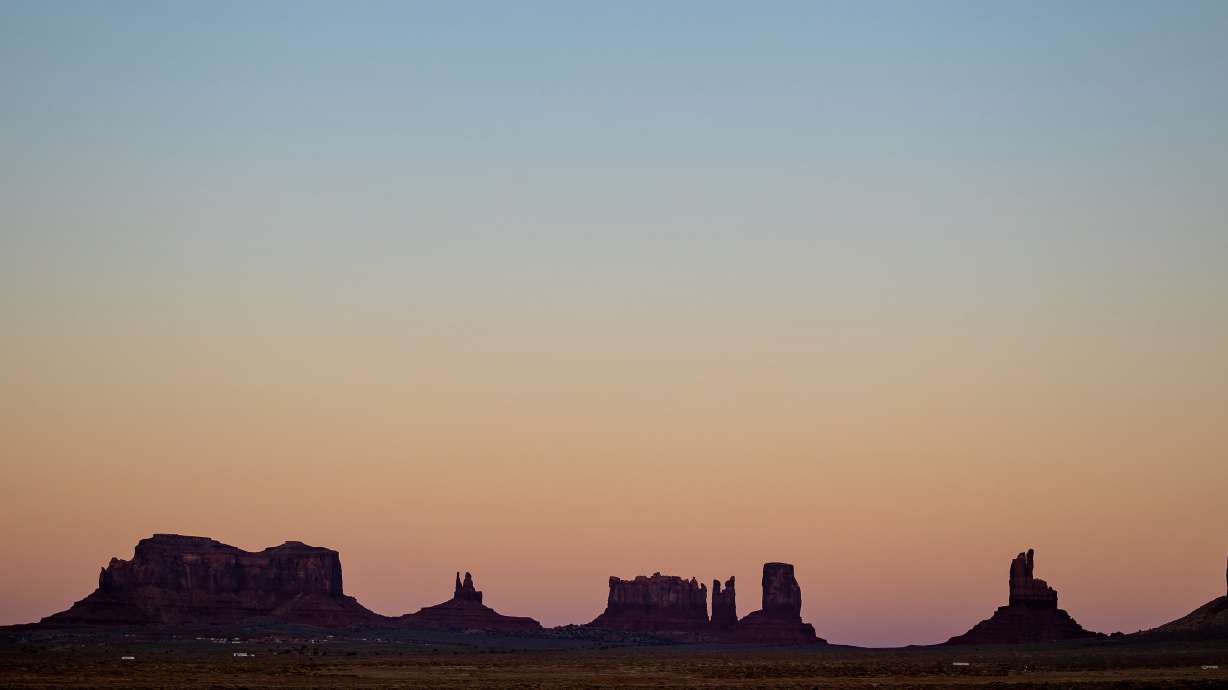Estimated read time: 3-4 minutes
This archived news story is available only for your personal, non-commercial use. Information in the story may be outdated or superseded by additional information. Reading or replaying the story in its archived form does not constitute a republication of the story.
MONUMENT VALLEY, Navajo Nation — As many southern Utahns and tourists prepare to flock to the great outdoors to view a solar eclipse in October, Monument Valley Navajo Tribal Park and other parts of the Navajo Nation will largely be shuttered.
Monument Valley and the 17-mile scenic drive through the park will be closed for a minimum of five hours (8 a.m. to 1 p.m.) on Oct. 14, during the annular eclipse. Park management made the decision to respect traditional Navajo beliefs and practices surrounding eclipses.
"There are a few staff who are willing to working during this time. They will be observing and enforcing park closure," Park Manager Adeline Tohannie said in a public memo. "Tour operators, if you have booked a tour for that day, you may continue with your tour. However, there is no booking in the parking lot during the time the park is closed. Park staff will not let anyone enter the park during the closure. We have received many calls letting callers know the park is closed during the eclipse."
Traditionally, Diné people have passed lunar and solar eclipses by staying inside, praying, fasting and avoiding looking at the sun; sleeping, brushing one's hair or washing themselves. Those who don't observe the practices are said by tradition to experience eye problems, sunburns, rashes, digestive problems, migraines and, for pregnant women, prenatal problems. The end of an eclipse is marked by meals and offerings of corn pollen, which symbolizes renewal and rejuvenation.
"During the eclipse, we must be in full prayer and reverence. Prayers must be focused on the concept of the sun or moon going through an ending, and we are to pray about the ending of bad or evil, or the ending of phases of life," the Institute for Diné Culture, Philosophy and Government said in a statement. "In addition, our prayers must be focused on the birth and renewal that will arrive when the eclipse ends. Moreover, prayers must be about a better future.
"Most of the time, we pray for and about ourselves and loved ones. It is advocated that prayers during an eclipse must mostly be about this creation: the ending, renewal and the future of this creation and the divine presence. If we know the songs for use during eclipses, those songs can be sung at that time."
In Diné teachings, the sun, referred to as Jóhonaa'éí, is the most powerful deity and controls and regulates the universe. Meanwhile, the moon, or Tł'éhonaa'éí, is the sun's female pair who regulates the earth. Many Navajos believe both a birth and death take place during the eclipse.
"The sun is vested with the concept of and in control of death (anoonééł), and the moon is vested with and in control of birthing (oochííł). When a solar or lunar eclipse occurs, it is believed that a death occurs," the institute said. "A death is a very sacred occurrence. There are certain necessary protocols, but most important is the strict and comprehensive reverence in observing the occurrence of death (yéego dílzin dóó hodílzin)."
The Institute for Diné Culture, Philosophy and Government said it is also believed the sun and moon are mating during an eclipse. The product of that intimate act is a birth or renewal and realignment of all of creation.
"Due to the very sacredness of death and birth, the reverence required to be shown during an eclipse is very strict and comprehensive (ts'ídá yéego hodílzin). There is only one way to be reverent during an eclipse. No shortcuts exist. We cannot simply smudge ashes or corn pollen upon ourselves and exit our homes and carry on as if it is just another day," the institute stated. "The Diné Institute is merely sharing our sacred and still relevant cultural teachings. An individual always has a choice to observe or not to observe the eclipse."
The Diné Institute's full statement can be read on Smithsonian Magazine's website.










